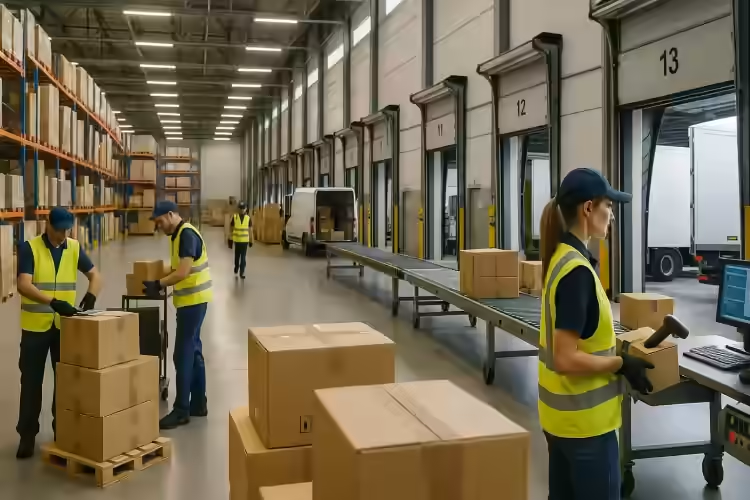Choosing a Warehouse for 3PL Operations
What Makes a Warehouse 3PL-Ready?
Here’s the thing—just because a building has four walls and loading docks doesn’t mean it’s ready for third-party logistics (3PL). A 3PL operation is all about efficiency, flexibility, and service delivery. Your warehouse has to keep up—or you’re dead in the water.
So, what does a “3PL-ready” warehouse actually look like?
It’s a facility that can:
- Handle multiple clients with different needs
- Scale quickly during peak seasons
- Integrate with various order systems
- Support inbound, outbound, returns, kitting, and value-added services
Location: It’s Not Just About ZIP Code
We get it. Everyone wants the “perfect location.” But for 3PLs, that doesn’t always mean the most central ZIP code—it means the *right balance* of proximity, cost, and access.
Here’s what to look for:
- Proximity to clients' customers – Can you deliver to key regions within 1–2 days?
- Major carrier hubs – FedEx, UPS, USPS… the closer you are, the faster and cheaper your drop-offs.
- Freeway and intermodal access – Especially if you’re handling inbound freight from ports like Long Beach or Savannah.
Space, Flexibility, and Scale
Let’s talk square footage—but more importantly, how you use it.
3PLs need layouts that adapt. One client may need 10,000 sq ft today and 50,000 next quarter. Another might want high-volume pick-and-pack while their neighbor just needs cold storage.
Your warehouse needs to flex—fast.
Look for:
- High ceilings for vertical storage (20+ ft is ideal)
- Clear span interiors with minimal columns
- Expandable footprints or adjacent units available
- Climate control zones if you’re handling perishables or electronics
Tech Readiness: Automation & Integration
Here’s where the wheat separates from the chaff.
A 3PL warehouse without a solid tech backbone? It’s a liability.
You’ll need:
- Reliable, high-speed internet—seriously, check it in person
- Networked infrastructure for scanners, conveyors, and tablets
- WMS compatibility with platforms like ShipBob, 3PL Central, or NetSuite
- Security systems with camera coverage and remote access
Don’t settle for a building that’s stuck in 1998.
Dock and Yard Configuration
If shipping and receiving are the heartbeats of your 3PL business, then your docks are the valves.
Ask yourself:
- How many dock-high doors are there? Are they leveled?
- Are there separate doors for inbound and outbound?
- Is there room for 53' trailers to turn, stage, and back in without a dance routine?
- Is the yard fenced, secured, and lit at night?
Labor Access and Zoning
Labor is your lifeblood. So pick a location where your workforce can actually get to you.
Here’s what matters:
- Public transit access (especially for entry-level roles)
- Nearby staffing agencies or workforce development centers
- Wage expectations and local labor competition
A hidden zoning restriction could cost you thousands in delays or legal headaches.
Shared Space vs. Dedicated Space
Some 3PLs run out of co-warehousing environments (think: shared buildings with separate cages or sections). Others lease or own dedicated spaces.
So which is better?
Shared space is great for:
- Startups testing new verticals
- Seasonal surges or short-term contracts
- Lower up-front capital
- You’ve got long-term client contracts and need branding/security control
- You’re using automation or custom layouts
- Your volume justifies it
Key Questions to Ask Before Signing
You’ve walked the building. It’s shiny. The landlord is charming. But before you sign anything, ask these:
- How fast can I scale up or down within this facility?
- Can the landlord support tech upgrades (power, cabling, IT rooms)?
- What’s the history of turnover in this building?
- Any restrictions on truck routes, noise, or hours of operation?
- Who handles yard snow removal, security, and lighting?
Also—walk the facility at different times of day. Peak hours can reveal issues you won’t catch during a 10 a.m. tour.
Final Take
The right warehouse for your 3PL operation isn’t just about space—it’s about strategy.
Can you scale? Can you deliver fast? Can you serve diverse client needs without breaking your workflows?
A bad warehouse won’t just cost you money—it could cost you clients. So invest in a facility that works as hard as your team does.
Because in the 3PL world, speed wins—but only if your warehouse can keep up.

